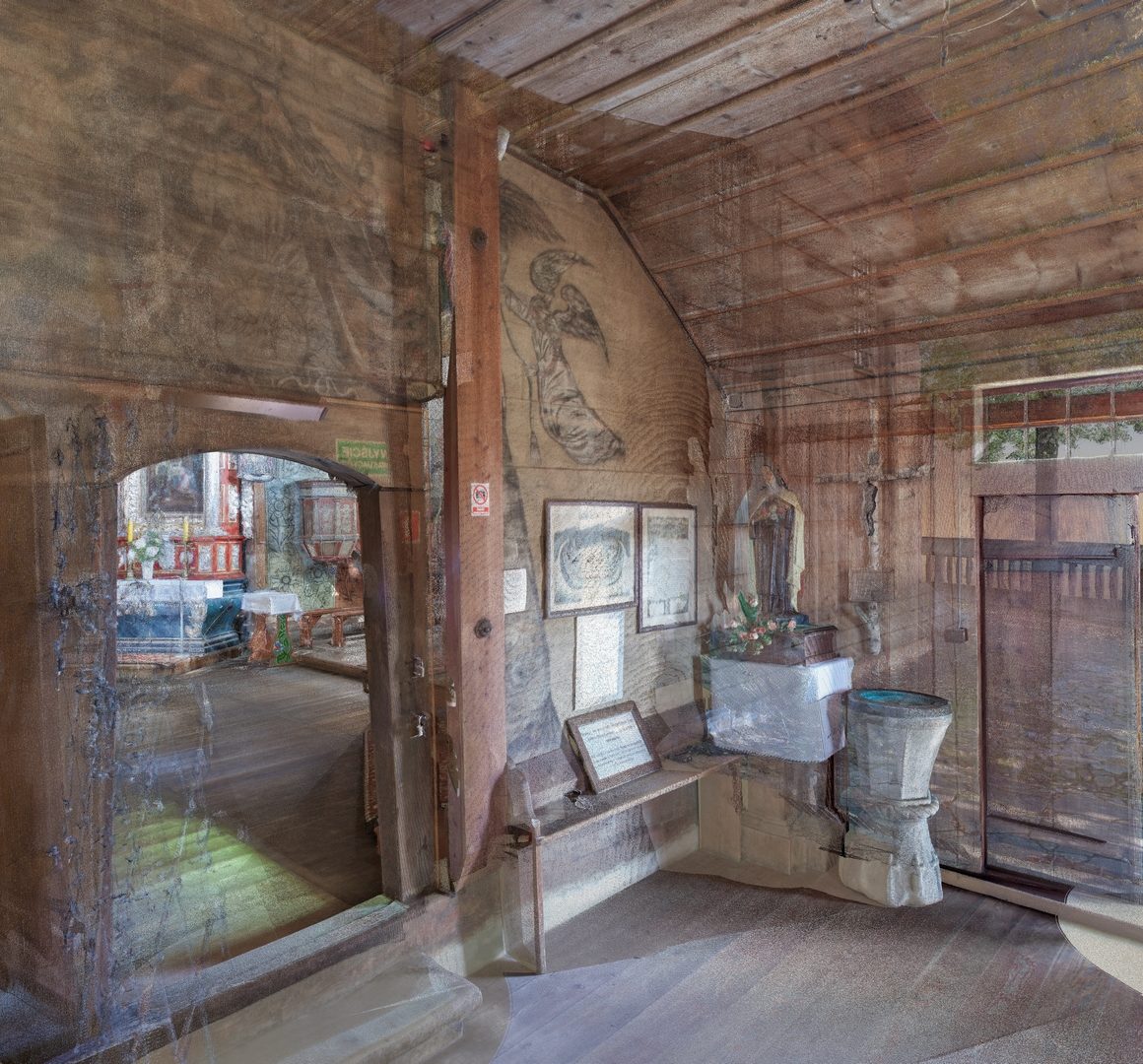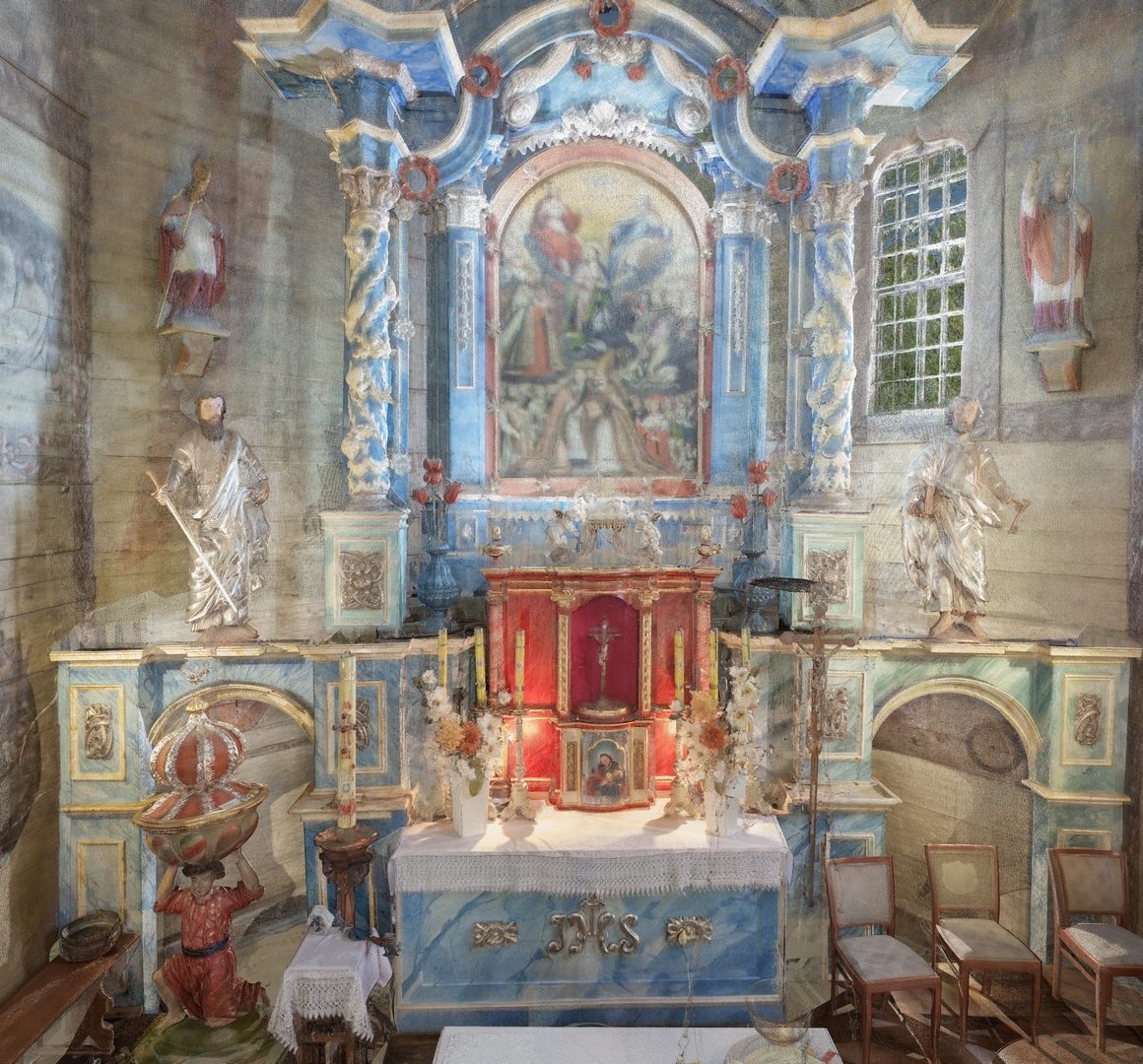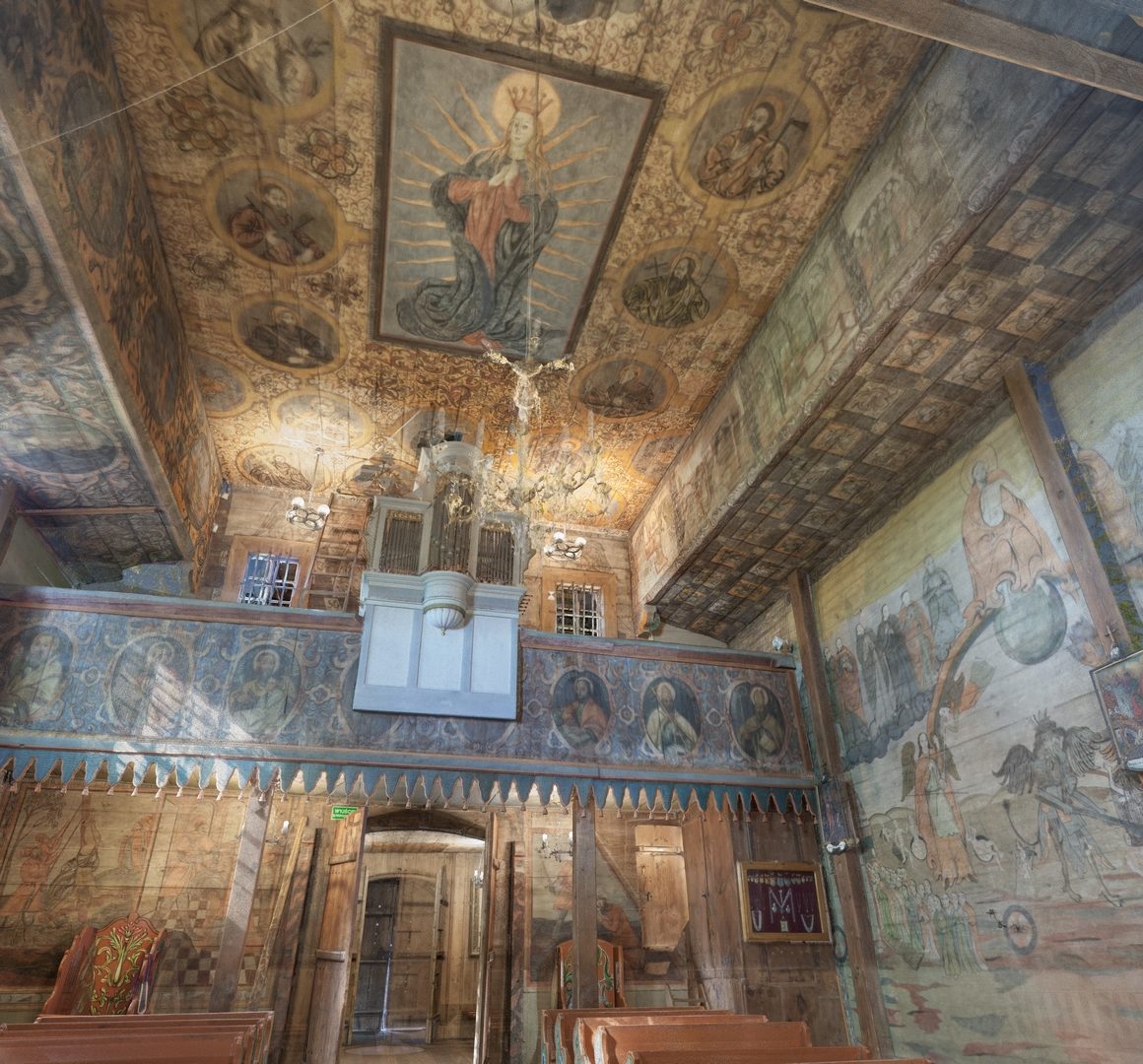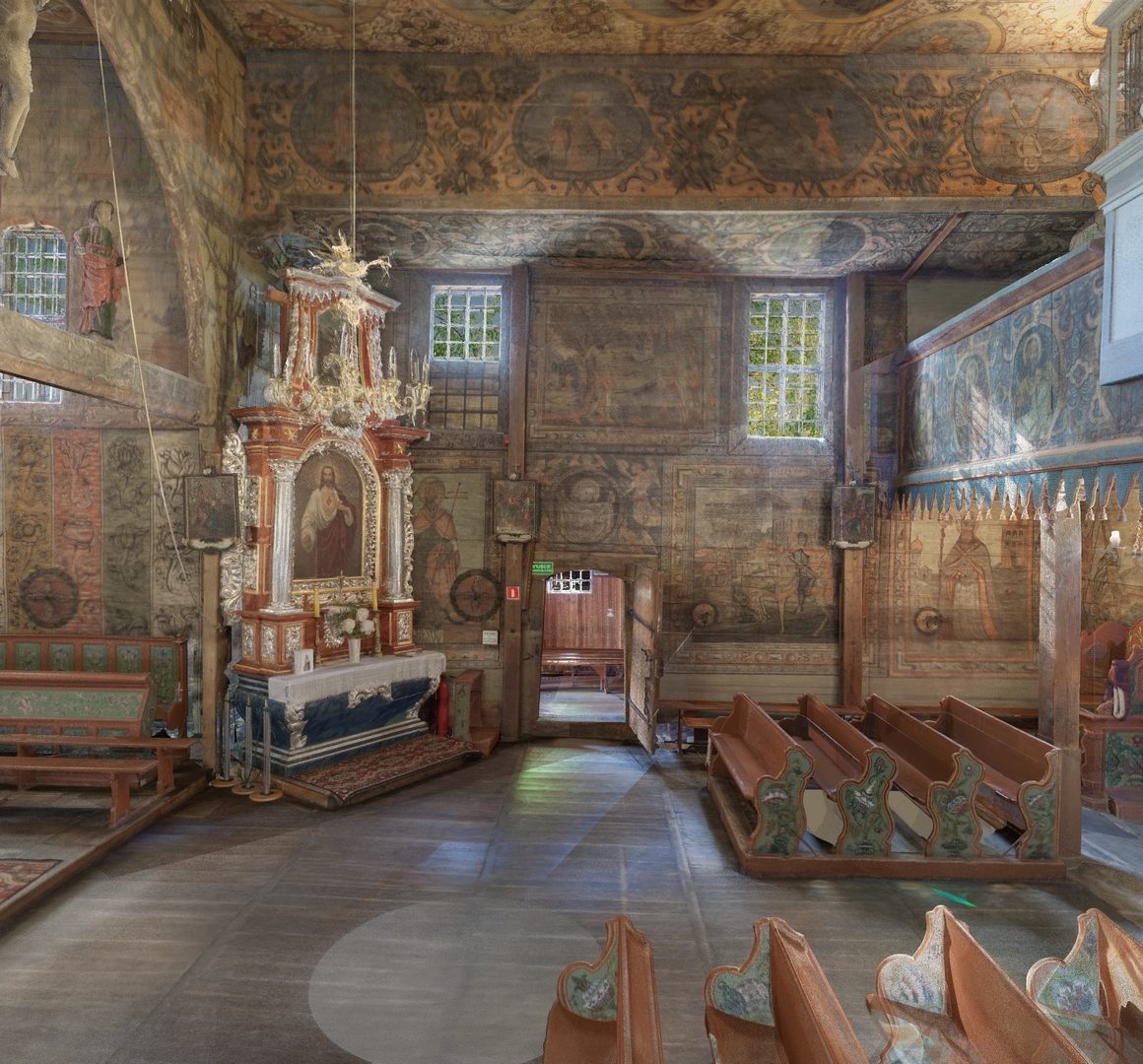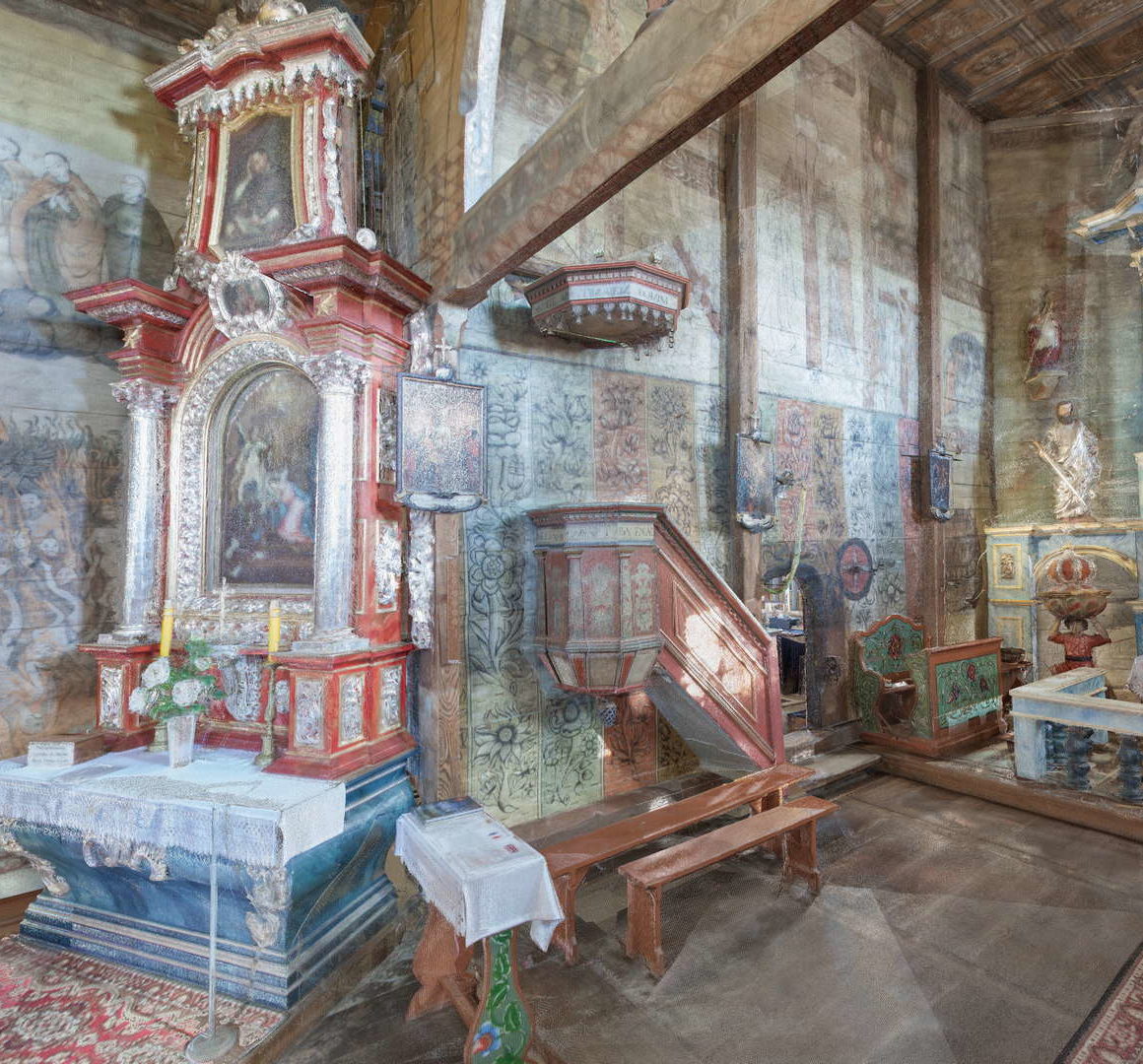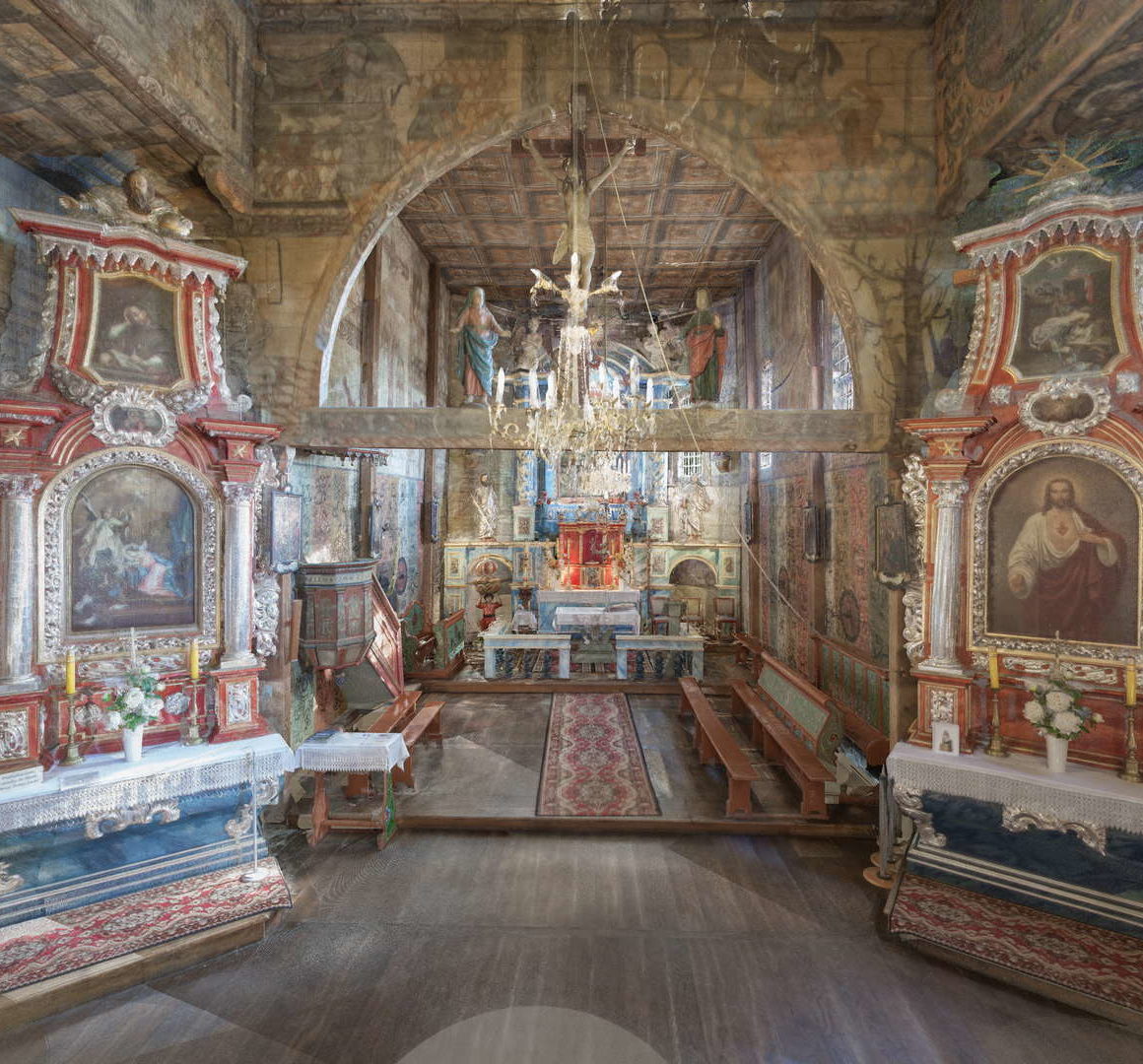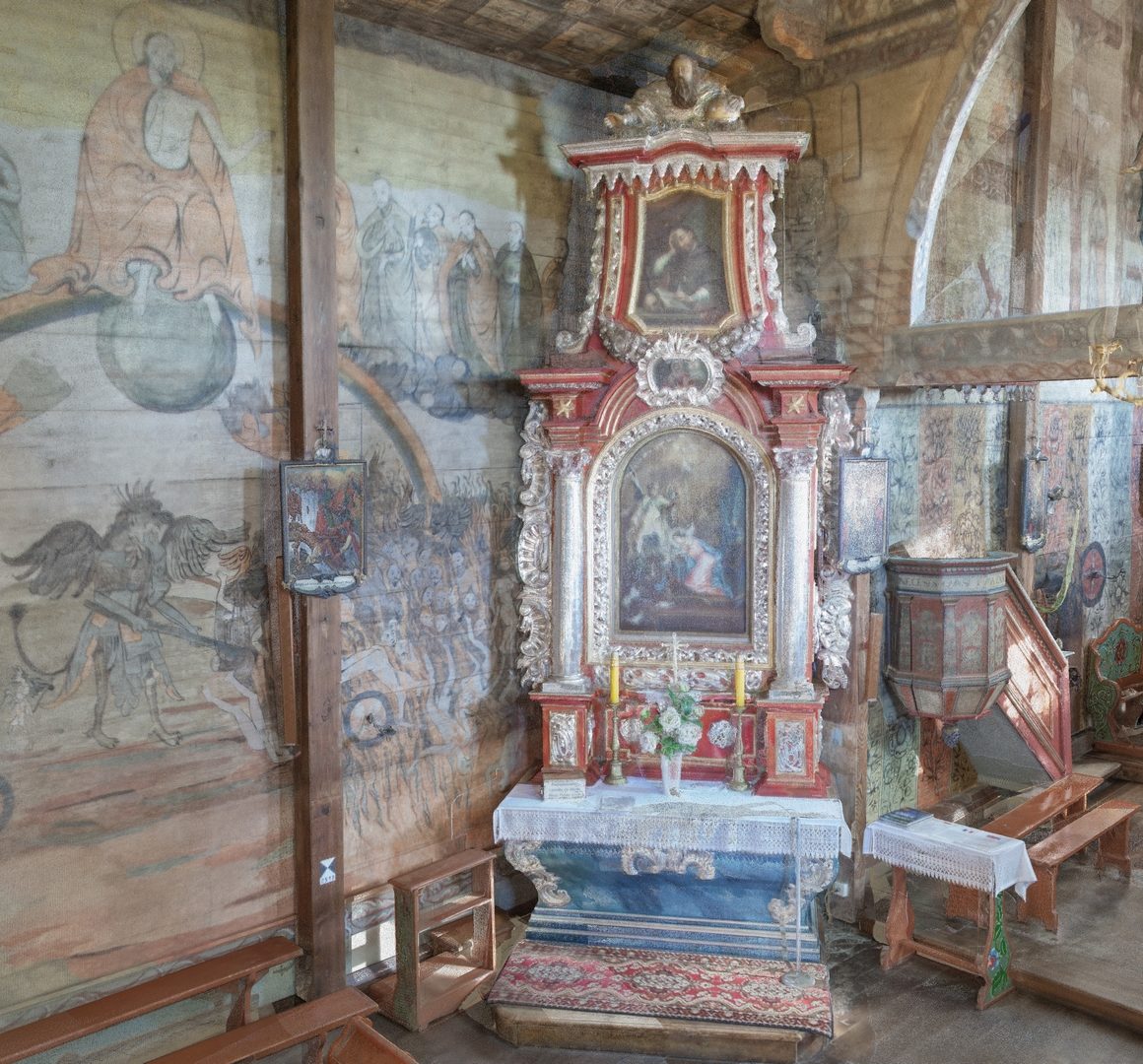Blizne – Church of All Saints.
Fun fact – Our Lady Full Of Grace in the side altar.
The side altar of the church in Blizne houses a late-Gothic sculpture that is a remnant of the Annunciation Group, possibly the middle part of the late medieval altarpiece which has not survived to our times. This is a representation of Mary, who is kneeling by the pulpit where an open book is lying and she is looking over her right shoulder, where there must have been the announcing angel. The term “Full of Grace” derives from the Hail Mary prayer, i.e. the words Archangel Gabriel directed to Mary when announcing to her that she would give birth to the Messiah (“Hail Mary, full of grace”). Above Mary’s head, we can see a dove symbolising the Holy Spirit. Judging by the characteristic pose of Mary, the whole scene was based on a woodcut by Albrecht Dürer, published in “The Small Passion” series around 1509/1510. His version of the Annunciation showed Mary surprised by an angel when reading or praying, which was a very popular approach in late-medieval art, illustrating the belief that, before Archangel Gabriel’s visit, Mary had devoted herself to reading the Old Testament, especially the prophetic passages about the coming of the Messiah.
The Annunciation coincided with the Incarnation: it was the moment when the Child was conceived in the womb of Mary, hence the Feast of the Annunciation is celebrated on March 25, exactly nine months prior to Christmas.
The Annunciation also tells us that the Word is made Flesh: the Incarnation of the Messiah becomes a reality, and the Old Testament is replaced by the New Testament.
The sculpture from the church in Blizne was created around 1515-1520 and represents the late-Gothic expressive style characteristic of the Lesser Poland artists who were influenced by the creativity of Veit Stoss. However, it should not be attributed to Stoss himself.
In the 18th century, the figure was kept in the centre of the main altar of the church, but then it was moved to the chapel, where it was found in the 1960s.
Fun fact – oriental perpetrators.
The scenes of martyrdom of saints in the nave of the church in Blizne, founded in the 17th century, draw our attention to the figures of the perpetrators: their costumes and features seem to be oriental. The depictions might be a reference to the Mongol (Tatar) attacks, especially to the invasion which ravaged these areas in 1624, i.e. 25 years before the local murals were made.
The misfortune must have still been a vivid memory among the local residents, so it is not surprising that the perpetrators of the holy martyrs would be presented as Tatars bringing death and horror.
Fun fact – biblical David and Saint Cecilia as patrons of music.
Above the matroneum of the church in Blizne, we can find images of characters traditionally associated with sacred music. As for the Old Testament King David, he was not only a ruler, but also a poet and a musician. Even before he became a king, young David had played the zither to ward off the evil spirit that tormented Saul (according to the Book of Samuel). The tradition, however, mainly associates David with writing the most poetic part of the Bible, the Book of Psalms. The Penitential Psalms were considered particularly significant and David was said to have written them to express his regret about the sin he had committed: the king had an affair with Bathsheba, the wife of Uriah, and then sent Uriah to his death so he could marry his widow.
Admonished by a prophet, David realised that he had sinned, and when repenting he would compose and write part of the biblical Psalms. For this reason, the depiction of King David with a harp in his hand was often interpreted in a penitential context.
When it comes to female saints, the early Christian martyr Cecilia became a patron of music, although it must be said that her relationship with music seems to have been rather loose. Medieval legend does not say that Cecilia would compose herself or play any instrument, but only mentions that the saint had the gift of hearing the music of angelic choirs. This mention, however, was enough for Cecilia (according to legend, tortured in the 3rd century) to become the patron saint of church music.
Fun fact – other monuments in Blizne.
The church in Blizne is located right next to a presbytery complex, which consists of a former presbytery, granary and parish school. The presbytery (now a vicar’s house) was erected in the 2nd half of the 17th century as a log building, and was transformed in 1811. The 1st half of the 19th century saw the addition of a presbytery granary, which today houses a parish museum. The former parish school, which now functions as an organist’s house, was built in 1866.
The Hill of Saint Michael, called “Michałek”, is home to a chapel founded in 1877 by Józef Januszkiewicz. It stands on the site of previous buildings: a wooden chapel was erected here in 1624 and, according to local legend, it was a votive offering for rescuing the people from the Tartar invasion. Another chapel was built in 1674 (founded by Father Józef Nałogowski). In 1760, on the initiative of the Przemyśl Bishop, Wacław Hieronim Sierakowski, a Capuchin monastery and a church were built, but they were dissolved and demolished in 1788.

